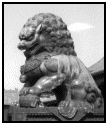
Traditional Chinese Medicine

With a minimum of 5000 years of unbroken History, Traditional Chinese Medicine offers a deep and rich perspective on the human condition.
During these five millennia, Chinese Physicians have formalised their keen and pragmatic observation of nature into four main therapeutic techniques: Exercise (T'ai Chi Chuan and Qi Gong) - Massage (Tuina), Diet, Acupuncture and Herbal Medicine.
Acupuncture was brought to the West around the 16th Century and gained popularity and recognition ever since. Chinese Herbal Medicine grew to become a giant body of knowledge capable of addressing most known illnesses.
Traditional Chinese Diagnosis - Recognising Patterns of Disharmony
Our first task is to understand the unique combination of energies which have caused your current disease. To do so, I will listen to your story and ask questions about your condition, your general health, your past medical history and about your lifestyle. When relevant, we will observe, assess and note any physical, emotional or mental symptoms. Finally, I will feel your pulse and look at your tongue. Both of the latter diagnosis techniques are of great importance in Traditional Chinese Medicine.
Once your pattern of disharmony has been diagnosed, we will decide on the best approach for your treatment. Depending on your condition, we might need to address certain aspects of your lifestyle. Your diet might require some adjustment, an exercise program may need to be reviewed or implemented. In some cases, combining Chinese Medicine with other Therapies could be the best course of action.
Acupuncture and MoxibustionAcupuncture is probably the most known form of Chinese Medicine in the West. There are evidences that Acupuncture was embryonically practiced back in the Stone Age. Written reference to Acupuncture have been found on tortoise shells thought to be about three thousand years old. The very famous "Yellow Emperor's Classic of Internal Medicine" is dedicated to Acupuncture and to the theory of Traditional Chinese Medicine. Its compilation dates back to about 600 - 300 BC.
Chinese Medicine has an energetic understanding of the body. This energy is called "Qi" (pronouced chee) in Chinese. It is believed to flow throughout the body via Meridians or Channels. Twelve of these Channels have an internal pathway connecting with their pertaining organ and an external pathway along which Acupuncture points are found.
In disease, the flow of Qi becomes impaired leading to discomfort, stiffness, pain, lowered body resistance, poor functioning of organs, etc...The task of Acupuncture is primarily to restore and maintain a normal flow of Qi throughout the body.
To do so, fine sterile stainless steel needles are inserted into selected points. Sometimes, other techniques (heat, electric stimulation, cupping) are used either in combination with the needles or on their own. The needles are usually retained for about twenty minutes to half an hour.
Needle insertion is virtually painless. However, as the therapeutic results depend on the successful contact with your Qi, it is essential that some sensations are achieved during treatment.
Traditionally, the Chinese have five words to describe valid needling sensations and one word for pain. Soreness, achiness, heaviness, tingling and spreading are desirable sensations after needle insertion. These sensations only last for a few seconds.
It is frequent to feel calm and relaxed during and after treatment.
Chinese Herbal Medicine has become increasingly popular in the U.K in the last few years. In China however, this tradition probably pre-dates the practice of Acupuncture.
 Chinese Physicians have collected, tested and experimented
with thousands of substances over the millennia. Gradually, these
substances were combined together according to their energetics
value to form balanced Herbal Formulae.
Chinese Physicians have collected, tested and experimented
with thousands of substances over the millennia. Gradually, these
substances were combined together according to their energetics
value to form balanced Herbal Formulae.
These Formulae, most of them still in use nowadays, constitute the blueprint from which modern Chinese Herbalists find their inspiration.